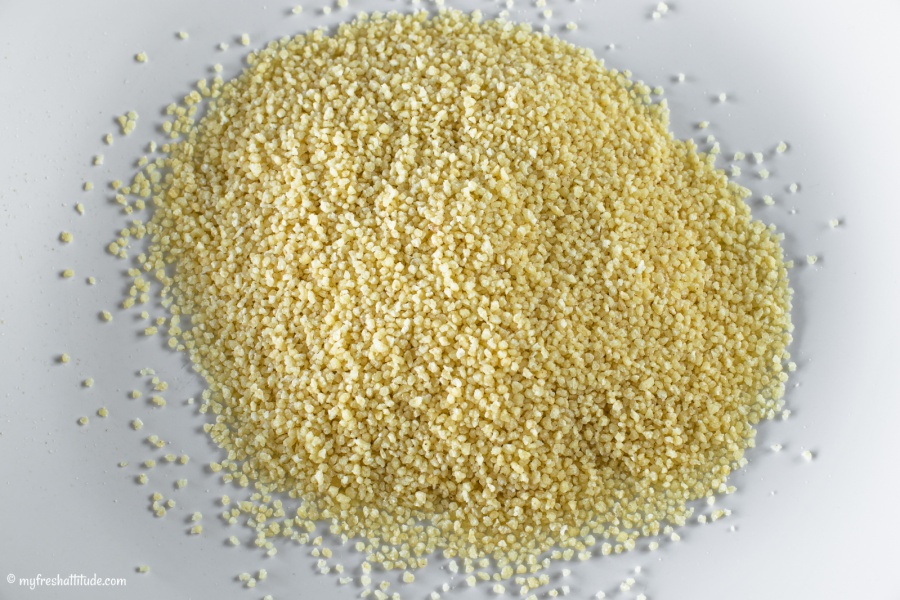
Couscous
Most of us are in blessed with strong childhood food memories that shape the way we approach food much later in life – or at least that’s what I believe.
One of my clearest food memories involves my Moroccan mother (or perhaps one of her sisters) lovingly preparing couscous. The preparation brought me a heightened sense of anticipation because it usually meant a special occasion…or from my viewpoint, lots of playing around with my cousins and a full stomach later in the day. My expectations for a feast intensified throughout the day, fueled by the unmistakable smell of couscous cooking in the kitchen. The aromas filled the house for hours. Whatever game I was engaged in at the time was quickly outweighed by my ever-increasing desire to feast on couscous.
Traditionally, couscous is nearly always served alongside a large stew filled with various vegetables cooked until they could barely hold their shape long enough for a spoon to scoop it up. In our house, my mother’s version almost always included some kind of beef that was cooked so long it basically dissolved into strands at the mere suggestion of touching it. The spices were exotic tasting…and carried a rather fiery punch. The couscous was always incredibly light and tender – and there was just a suggestion of some kind of nut-like aroma hanging around in the background. Even for a child, this was seriously good food that I couldn’t stop eating…until I couldn’t eat any more.
So yes…I am a bit of a couscous snob.
But wait…isn’t couscous a simple preparation? Just moisten the grains (they are grains, right?) with an equal amount of flavorsome broth, let it soak for 5 minutes and there it is – a true Moroccan couscous.
Well…no!
Couscous is made by combining semolina flour with water – essentially the same as any off-the-shelf pasta…only it’s not. Pasta is kneaded to form the gluten strands after the flour and water are mixed. This gives the pasta enough strength to remain intact after boiling. Couscous preparation involves mixing the flour with small amounts of water and gently rotating the mixture with the palm of your hand to create little pellets of grain and water that are sifted to create uniform sizes. It even sounds exotic at this point.
Now here’s the big difference between pasta and couscous. Pasta is worked hard and boiled to create a chewy consistency. If you boil couscous, you will end up with porridge. Steaming couscous will allow the individual grains to swell and become quite tender and fluffy…and this process takes time, but you will get a yield 2 to 3 times greater than if you followed the instructions on the couscous package.
Modern day couscous is always pre-steamed in the factory – and it doesn’t matter if it is labeled ‘instant’. This is why it the preparation instructions are simple – just moisten the grains with hot water. But if you follow these instructions, the end result is the couscous will swell even more – only in your stomach rather than the steamer. Excellent if you want to feel full, but not so good if you care about your digestion.
Check out How to Steam Couscous in our Techniques section.
There are no comments